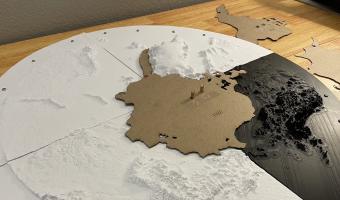
Sea ice is frozen ocean water that is most commonly found near the poles in the Arctic Ocean and Southern ocean around Antarctica. Sea ice plays a critical role in regulating the ocean circulation, thereby influencing the global climate. Abnormal melting of sea ice brought forth by warming temperatures leads to changes in global climate making it important to study the fluctuations in the sea ice extant. Scientists use different methods to study sea ice which include observations and climate […]
Sea ice is frozen ocean water that is most commonly found near the poles in the Arctic Ocean and Southern ocean around Antarctica. Sea ice plays a critical role in regulating the ocean circulation, thereby influencing the global climate. Abnormal melting of sea ice brought forth by warming temperatures leads to changes in global climate making it important to study the fluctuations in the sea ice extant. Scientists use different methods to study sea ice which include observations and climate models.
This tactile representation shows the impact of climate change on sea ice over four decades through a climate model (CESM2) showing the drastic decline in sea ice extant.
Acknowledgements: National Center for Atmospheric Research, University Corporation for Atmospheric Research, Boulder Public Library, BLDG61
Source: Arctic sea Ice. (archived version)
Added by: Nihanth Cherukuru.
Category:
Passive physical visualization
Tags:
cartographic, climate change, sea ice, teaching, 3D printing